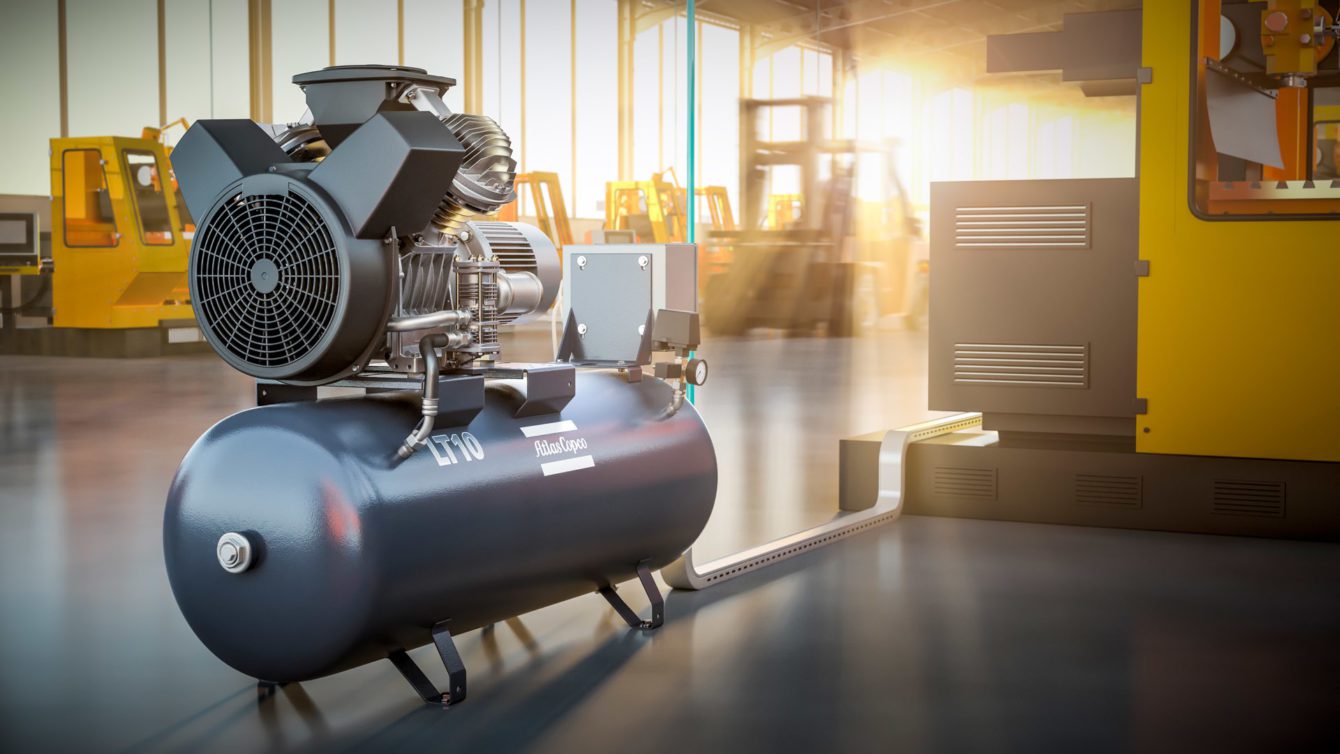Stepping into the world of air tools can unlock a new level of efficiency and capability for a wide range of tasks, from inflating tires to powering pneumatic nail guns. However, the first hurdle many DIY enthusiasts and hobbyists face is selecting the right air compressor. The array of options, with their varying specifications and features, can seem overwhelming. Understanding the key factors, such as tank size and CFM, is essential to making an informed decision and choosing a compressor that will effectively power your projects. This beginner’s guide will walk you through the fundamental considerations, helping you navigate the selection process with confidence.
The Versatility of Compressed Air: Beyond Inflation
Many first-timers associate air compressors primarily with inflating car tires or sports equipment. While they certainly excel at these tasks, the true potential of compressed air extends far beyond. With the right air tools, you can tackle woodworking projects with nailers and sanders, perform automotive maintenance with impact wrenches and paint sprayers, and even engage in artistic endeavors with airbrushes. Recognizing this versatility is the first step in appreciating the value of owning an air compressor.
Understanding Your Needs: Matching the Compressor to the Task
Before diving into technical specifications, take a moment to consider the types of projects you envision undertaking. Will you primarily be using it for light-duty tasks like inflation and powering small airbrushes? Or do you anticipate needing to run more demanding tools like framing nailers or impact wrenches? The power requirements of your intended tools will be the primary driver in determining the appropriate air compressor for your needs.
Key Specification #1: Tank Size – Storage Capacity Matters
The tank size of an air compressor, typically measured in gallons, refers to the amount of compressed air the unit can store. A larger tank offers several advantages. It allows you to run air tools for longer periods without the motor constantly cycling on and off. This is particularly beneficial for continuous tasks like painting or sanding. A larger tank also provides a buffer, helping to maintain a more consistent air pressure at your tool.
Small Tanks (1-6 Gallons): Portable and Ideal for Light Tasks
Compressors with smaller tanks are typically more portable and lightweight, making them convenient for tasks like tire inflation, powering small nailers for upholstery, or running airbrushes. They are a good entry point for occasional use.
Medium Tanks (10-30 Gallons): Balancing Portability and Power
Mid-sized tanks offer a good balance between portability and power. They can handle a wider range of tasks, including running some medium-duty air tools for shorter durations. These are often a popular choice for DIYers tackling home renovation projects.
Large Tanks (60+ Gallons): Powering Demanding Tools for Extended Periods
Compressors with large tanks are designed for more demanding applications and prolonged use. They can comfortably power tools like framing nailers, impact wrenches, and paint sprayers for extended periods, making them suitable for professional use or serious hobbyists.
Key Specification #2: CFM (Cubic Feet per Minute) – The Flow Rate
CFM is a measure of the volume of air the compressor can deliver at a specific pressure. This is arguably the most critical specification when matching a compressor to your air tools. Each air tool has its own CFM requirement at a specific operating pressure (usually measured in PSI – pounds per square inch).
Understanding CFM Requirements of Your Tools
Before purchasing a compressor, identify the CFM requirements of the air tools you plan to use most frequently. This information is usually found in the tool’s specifications. It’s generally recommended to choose a compressor that delivers a CFM rating at least 1.5 times the highest CFM requirement of your tools to ensure they operate efficiently.
SCFM vs. ACFM: Standard vs. Actual CFM
You might encounter two different CFM ratings: SCFM (Standard Cubic Feet per Minute) and ACFM (Actual Cubic Feet per Minute). SCFM is a theoretical measurement under standardized conditions, while ACFM reflects the actual air delivery at a specific operating pressure. Pay close attention to the ACFM rating when matching a compressor to your tools, as this is the more practical measure.
Types of Air Compressors: Reciprocating vs. Rotary Screw
The internal mechanism that compresses the air also varies among different types of compressors. For beginners, reciprocating (piston-style) compressors are the most common.
Reciprocating Compressors: The Workhorse for Home Use
Reciprocating compressors use pistons to compress air in a cylinder. They are generally more affordable and suitable for intermittent use, making them a popular choice for home and DIY applications. They can be either single-stage or two-stage, with two-stage compressors typically offering higher pressure and efficiency for more demanding tasks.
Compressors Rotary Screw: For Continuous and Heavy-Duty Use
Compressors rotary screw types utilize rotating screws to compress air. These are typically more expensive and designed for continuous, heavy-duty industrial applications. They are quieter and more efficient for prolonged use but are generally overkill for most home users. When looking at an air compressor supplier, you’ll find that rotary screw compressors are a staple for commercial operations.
Power Source: Electric vs. Gas-Powered
Air compressors are primarily powered by either electricity or gasoline.
Electric Compressors: Convenient for Indoor Use
Electric compressors are the most common choice for home and workshop use. They are quieter, require less maintenance, and are suitable for indoor environments. You’ll need to ensure your electrical system can handle the compressor’s power requirements (voltage and amperage).
Gas-Powered Compressors: Portable Power for Outdoor Jobs
Gas-powered compressors offer portability and high power output, making them suitable for construction sites or other locations where electricity is not readily available. However, they are typically louder, require fuel, and produce exhaust fumes, limiting their indoor use.
Noise Level: A Consideration for Home Environments
The noise level of an air compressor can be a significant factor, especially if you plan to use it in or around your home. Noise levels are typically measured in decibels (dB). Look for models with lower dB ratings if noise is a concern. Some manufacturers offer “quiet” compressors that incorporate noise-dampening features.
Portability: Wheels and Handles for Easy Movement
If you anticipate needing to move your air compressor frequently, consider models with wheels and a handle. The size and weight of the compressor will also impact its portability. Smaller tank units are inherently more portable.
Maintenance: Ensuring Longevity and Performance
All air compressors require some level of maintenance to ensure optimal performance and longevity. This typically includes regularly draining the tank to remove moisture, checking for leaks, and occasionally replacing air filters. Consider the ease of maintenance when making your selection.
Budget: Balancing Features and Affordability
Your budget will undoubtedly play a role in your decision. Entry-level compressors for light-duty tasks are generally more affordable, while larger, more powerful models with advanced features will cost more. Balance your needs with your budget to find the best value.
Choosing a Reputable Air Compressor Supplier:
When purchasing your first air compressor, selecting a reputable air compressor supplier is important. A good supplier will offer quality products, provide knowledgeable advice, and offer reliable customer support and service. Research different suppliers and read reviews before making your purchase.
Conclusion: Empowering Your Projects with the Right Compressor
Selecting your first air compressor doesn’t have to be a daunting task. By understanding your needs, familiarizing yourself with key specifications like tank size and CFM, and considering factors such as power source, noise level, and budget, you can confidently choose a compressor that will empower your projects and provide years of reliable service. Remember to consider the tools you’ll be using most often and to select a compressor that can comfortably meet their demands. With the right air compressor by your side, you’ll unlock a world of possibilities for your DIY and professional endeavors.































